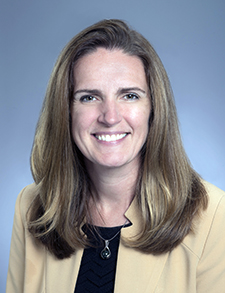
Presenters: Marisha Burden, MD, FACP, SFHM, University of Colorado School of Medicine, Aurora, Colo., and Angela Keniston, MSPH, University of Colorado
The speakers at this Converge session focused on the inadequacies of current measures of hospitalist workload and how these inadequacies can lead to worsened outcomes. They then proposed a new model for assessing workload that could be used for staffing strategies.
As evidenced by audience input, most health care systems measure workload through productivity (wRVUs—work relative value units), the number of patient encounters, or financial measures (dollars spent/cFTE [clinical full-time equivalent], collections). However, these measures don’t consider other important factors that play into the workload, such as patient complexity or work environment. They also fail to tie other outcomes into the workload, such as hospitalist well-being, patient safety/safety culture, job performance, institutional outcomes (length of stay, readmissions), or academic productivity.
We know from the nursing literature that high nurse-to-patient staffing ratios affect patient mortality as well as nurse burnout and job satisfaction. We also know that increasing hospitalists’ workloads negatively impacts hospitalists and their job performance, and negatively impacts hospital operational and financial outcomes.1 For each increase in RVU and census, quality and efficiency of care decrease, and costs and length of stay increase. Focusing solely on productivity and financial measures without considering other pressures can negatively affect hospitalist well-being and burnout as well as work efficiency and patient safety. A high census can also hinder quality-improvement efforts, and a rushed clinician is less likely to consider their biases.

Dr. Bonsall
In addition to the ideal caseload, groups must also try to forecast capacity. Capacity strain is difficult to predict, which leads to insufficient resourcing/staffing. When a capacity strain occurs, low-yield tactics are typically employed, like telling people to “discharge faster.” This causes significant stress and is unsafe for patient care.
The speakers also emphasized that task load—the subjective mental workload—should be considered when making staffing decisions. Task load is affected by patient complexity, work environment, interruptions, and anything that can lead to fractured attention.2 Task load can be measured by tools such as the National Aeronautics and Space Administration task load index (NASA-TLX), which can be used to conduct a subjective mental workload assessment. Increased task load leads to increased processing time on complex tasks and impaired working memory, as well as increased bias. Task load can be improved by taking measures such as prioritizing quality of communication, designing physical spaces to foster attention, evaluating the effects of proposed changes on workforce roles and duties, and optimizing electronic health records.
The speakers are currently developing an easy-to-use tool to track total work that can be used to define and measure inpatient clinician workload. The tool will then be used to pair workload to key outcomes. Tool inputs include the institution and worker characteristics (type/size of hospital, number of units, years since training, years with group) as well as workplace conditions (type and length of shift, presence of learners, presence of APPs, number of steps taken). Job demands are also incorporated, such as the patient-to-clinician ratio, the NASA-TLX, and the patient’s severity of illness. Outputs include both short- and long-term outcomes. In addition to patient and institutional outcomes (length of stay, mortality, etc.), they also included worker outcomes such as burnout, work experience, and attrition/intent to leave. Ultimately, the tool will be combined with the electronic health record to tie workload to other tasks, such as when and for how long clinicians are doing documentation work, or how many secure chats are sent and when. The plan is to use this tool to collect data in real-time, which will enable the development of data-driven staffing strategies that can be standardized across processes and outcomes.
Key Takeaways
- There are various ways to measure workload. Most institutions focus on productivity or financial measures, which may neglect other important measures such as well-being or patient safety.
- Increases in census impact efficiency, patient safety measures, and hospitalists’ well-being.
- Task load is an often neglected but important aspect of workload that reflects patient complexity, interruptions, and other factors that affect attention.
- The speakers are currently designing a tool that can measure multiple aspects of workload and link workload to outcomes. The tool will eventually be used to develop data-driven staffing strategies.
Dr. Bonsall is an associate professor at Emory University School of Medicine and a hospitalist at Grady Memorial Hospital in Atlanta.
References
- Elliott, D.J., et al. Effect of hospitalist workload on the quality and efficiency of care. JAMA Intern Med. 2014;174(5):786.
- Kissler, M.J., et al. Toward a medical “ecology of attention”. N Engl J Med. 2021;384(4):299-301.